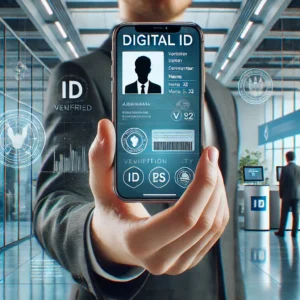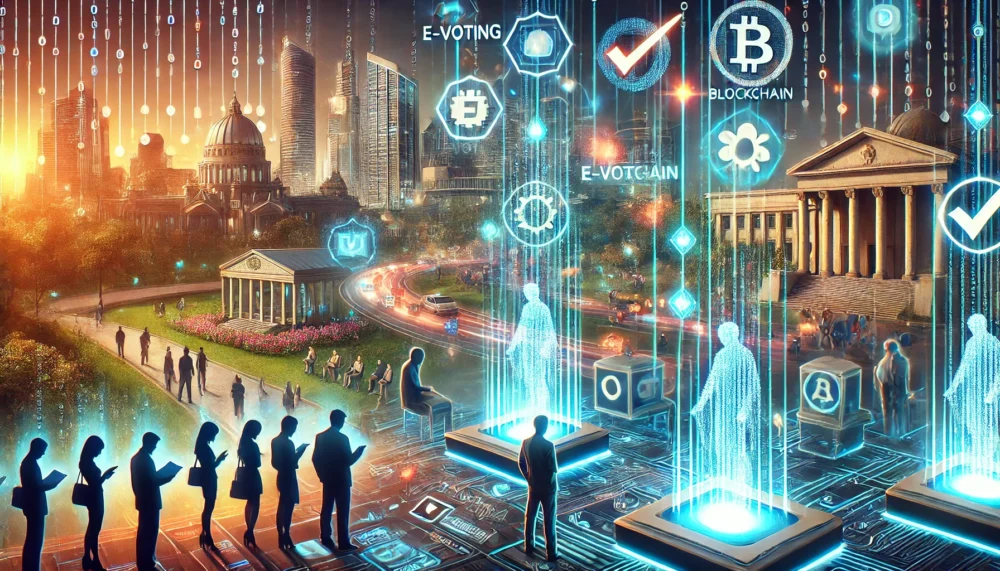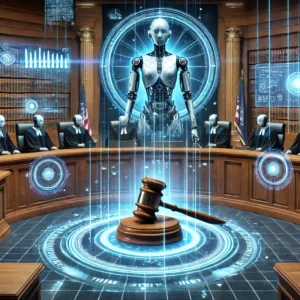
Picture this for a moment: You stand in line at a government office waiting to prove you are you—armed with a bulky binder of papers, scanning the surroundings for the next available window. Feels a bit like a journey back in time, doesn’t it? In our hyper-connected era, relying on piles of photocopies and ink-stamped forms is almost surreal. That’s precisely why governments worldwide, from the United States to emerging nations, have been championing digital IDs—secure, efficient, next-level identification systems that could simplify life for everyone.
Yet, this fast-evolving realm isn’t without its complexities. Policymakers, celebrities, older folks, youths, and even curious scientists from advanced research labs all have opinions—some cautious, some wildly optimistic—on whether blockchain-based IDs can truly revolutionize public services. If you’re intrigued by how an electronic credential might replace the need to keep track of 15 different documents, or how it could enhance inclusive politics in the future, keep reading. Let’s dive into this swirling, multi-perspective universe of digital IDs and see why the 2025 horizon might look brighter—or more complicated—than ever.
Table of Contents
- The Rapid Rise of Digital IDs
- Political Pulse: How Governments Are Pushing the Agenda
- Research Labs and Scientists: Innovations on the Frontlines
- Celebrities Speaking Out: Vanity or Vision?
- Seniors and Skepticism: Older Voices in the Debate
- Youth and the Future: Energetic Enthusiasm vs. Digital Doubts
- Blockchain’s Role: Secure Foundations or Overhyped Promise?
- Navigating Privacy: Fear, Trust, and Transparency
- Social Implications: Inclusivity, Inequalities, and Transformation
- Best Practices from Global Leaders
- Embracing the Next Step: A (Slightly) Tangled Path Forward
- Call to Action and Further Resources
1. The Rapid Rise of Digital IDs
Have you noticed how your smartphone has replaced your camera, alarm clock, and maybe even your wallet in recent years? Now, it’s on track to replace your physical identity documents too. According to the California Department of Technology’s Digital ID Initiatives, major strides have been made to make state services accessible online. The end goal? Empower people to authenticate themselves anywhere—via biometrics, QR codes, or advanced cryptography—without rummaging through multiple forms of ID.
Digital IDs aren’t exactly a brand-new concept. Countries like Estonia have led the charge with e-Residency, providing a digital identity that allows anyone, from anywhere, to tap into their digital infrastructure. Meanwhile, the U.S. Agency for International Development (USAID) highlights how inclusive digital identity frameworks can accelerate development, giving even remote rural populations a way to access essential benefits.
But while some folks treat the rollout of digital IDs as a no-brainer, the reality is sprinkled with tension. Can we standardize them quickly enough across states or countries? Is data protection robust enough to keep cyber thieves at bay? Will this hamper offline populations or older citizens who aren’t digitally savvy? These questions swirl amid the undeniable drive toward more secure, more convenient identity solutions.
2. Political Pulse: How Governments Are Pushing the Agenda
Politicians adore the phrase “cutting red tape,” but many proposals for digital ID have ironically attracted more debate, especially in election years. The spotlight intensifies when luminaries from different parties argue about privacy intrusion vs. modernization.
- Government Notes and Legislation: Certain pilot projects, for example, in states like California and Arizona, are testing out smartphone-based driver’s licenses. They rely on advanced authentication methods, sometimes involving biometrics, so you don’t even need to open your wallet. Some representatives tout it as cost-effective for taxpayers, while others raise eyebrows over digital equity for lower-income communities.
- Breaking Down Barriers: At the federal level, there’s momentum to unify these scattered pilot programs into a standardized approach. Officials are referencing the DHS Science and Technology Directorate’s Digital Identity and Trust framework, which explores how identity verification can be both user-friendly and resilient against manipulation.
- Political Storms: You can’t ignore how certain political factions caution that if the government can track IDs electronically, it might gain more control than we’d like. Conspiracy theories thrive on that concern—so the political dance around digital ID is a tango of progress and suspicion.
Interestingly, the 2024 U.S. elections saw some politicians vow to push for seamless online voter registration and direct digital identification for secure mail-in ballots, stoking a swirl of media coverage. By 2025, these proposals have either become reality in some jurisdictions or remain stuck in legislative committees, shaped by ongoing arguments about data privacy.
3. Research Labs and Scientists: Innovations on the Frontlines
The laboratories racing to advance digital identity are packed with scientists who share a heady mixture of optimism and caution. They experiment with cryptographic methods that might, ironically, overshadow our current digital systems.
A prime example: The DHS’s push for zero-knowledge proofs in identity verification. These advanced algorithms could allow you to verify you’re over 21 or that your license is valid without disclosing any more details than necessary. Meanwhile, organizations like the Institute for Technological Innovation have shown glimpses of “quantum-secure” identity solutions, preparing for a future where quantum computers might break today’s cryptography. It’s equal parts fascinating and nerve-racking—like a roller coaster that might one day prove essential but also quite terrifying.
According to a recent paper from a leading U.S. think tank on the path to digital identity, these scientific breakthroughs pave the way for stronger public trust. After all, if advanced labs certify that certain systems are extremely tough to hack, more citizens may feel confident adopting digital IDs.
4. Celebrities Speaking Out: Vanity or Vision?
Celebrities often serve as unofficial ambassadors for new tech trends—some genuine, some purely promotional. It’s no different with digital IDs.
- Hollywood’s Take: A high-profile actor once joked in an interview, “I lose my keys every week; if my identity also goes missing, at least I’d prefer it be on my phone so I can ping it.” This playful remark did highlight a universal frustration with physical documents.
- Musicians & Activists: A prominent pop star, known for philanthropic ventures, posted a short video on social media endorsing digital IDs as a gateway to bridging the gap for people in underdeveloped regions—“Because identity is power!”
- Cynical Views: Not all celebrity endorsements come without skepticism. Critics note that big endorsements can overshadow the real policy details. Some call it “techno-glamor,” a phenomenon where the glitz might obscure legitimate user concerns like data leaks or the dreaded “Big Brother” effect.
Celebrities can, however, rally awareness more than most government officials can. People might not read a 50-page policy brief, but they’ll watch a 10-second reel from their favorite star. Love it or hate it, that star power can speed up acceptance—or misunderstanding—of digital ID.
5. Seniors and Skepticism: Older Voices in the Debate
If you sit down for coffee with a group of retirees, you might hear conflicting thoughts about using blockchain-based IDs for government services:
- “You want me to store my entire identity on a phone that I can barely unlock?”
- “I’ve seen my grandchild do all sorts of magic with that phone—maybe it’s easier than carrying my Social Security card everywhere.”
On one hand, older adults often worry about technology’s learning curve. Security, convenience, and user-friendliness matter, but intimidation is real. According to an informal poll by a senior advocacy group, about 40% of participants expressed that if digital IDs become mandatory, they’d need substantial training and strong in-person support.
On the flip side, many seniors are surprisingly open to these shifts, particularly those already comfortable with smartphones for video chats or health apps. They love not having to trek to government offices. The social aspect—less time waiting, more time enjoying retirement—appeals to them. So yes, it’s a bit contradictory; seniors often straddle a line between curiosity and confusion.
6. Youth and the Future: Energetic Enthusiasm vs. Digital Doubts
Youthful populations—Gen Z, in particular—are famously comfortable living online. They shop, socialize, and sometimes even date or attend classes through digital platforms. For them, the idea of a government service kiosk is archaic. If they can register for events, pay taxes, or even cast a vote with a digital ID, it’s a no-brainer.
And yet, the youth is also hyper-aware of data privacy issues. They’ve witnessed fiascos on social media, where personal info gets exposed and manipulated. Some protest that governments haven’t historically been the best stewards of sensitive data. They might say, “Sure, I want a digital driver’s license, but how can I ensure you won’t track my every move?”
This generation’s trust in technology can be strong, but their trust in governments can be, well, complicated. That dual perspective—embracing digital convenience while demanding accountability—could shape how digital ID evolves, especially as the youth takes on more leadership roles.
7. Blockchain’s Role: Secure Foundations or Overhyped Promise?
A signature aspect of emerging digital IDs is the use of blockchain. The allure? Decentralization. Instead of relying on a single government server, your identity data could be fragmented into encrypted blocks across a network, making tampering or hacking exponentially more difficult—at least in theory.
Pros of Blockchain-Based IDs:
- Tamper-Resistant: Data stored in the chain is considered immutable, which is a fancy way to say you can’t easily alter past records.
- Transparent: Some implementations allow for verifying changes without a central authority.
- Personal Control: Individuals may get to manage their private keys.
Potential Pitfalls:
- Scalability: Handling millions of transactions (or validations) each day might cause slowdowns.
- Energy Concerns: Traditional blockchain approaches can be energy-intensive, though newer models are improving.
- User Complexity: Losing your private key could be catastrophic.
Skeptics occasionally tease that blockchain is just a hype word. But many of the scientists in advanced labs see it as an extra layer of security that surpasses old-school centralized databases. Meanwhile, global leaders and organizations call for building public trust in these systems—suggesting that blockchain might be the catalyst, provided the approach is user-friendly.
8. Navigating Privacy: Fear, Trust, and Transparency
There’s a delicate dance between forging trust and fueling paranoia. With an electronic system that collects personal data, a single slip-up could undermine months—or years—of progress.
Consider how USAID’s digital development team frames it: Digital ID can dramatically help individuals in remote or impoverished areas prove their identity and receive services, effectively shrinking bureaucratic nightmares. Yet if poor oversight or malicious attacks compromise data, those same communities might lose faith in the whole concept.
Key Privacy Measures:
- Strong encryption and tokenization that reduce the chance of identity theft.
- Clear user consent protocols, letting individuals control how much data they share.
- Oversight by independent privacy regulators to keep an eye on potential abuses.
Without these guardrails, a digital ID system could morph into a digital surveillance apparatus. As a result, political discourse often circles back to the question, “Can governments be fully transparent and ethically consistent?” Or do they have a vested interest in deeper monitoring?
9. Social Implications: Inclusivity, Inequalities, and Transformation
One of the biggest selling points for digital IDs is the hope of more inclusive access to government services—particularly in remote regions or underserved communities. Imagine not having to travel hundreds of miles to a city office just to fill out a government form.
- Bridging the Gap: Digital identity can open up new opportunities for economic participation, especially for women in conservative regions who might face social barriers leaving their homes.
- Widening the Divide?: On the flip side, if these technologies demand high-speed internet or sophisticated smartphones, it may unintentionally widen the digital divide, leaving marginalized groups further behind.
- Community-Level Momentum: Civil society groups are stepping in to ensure that digital ID solutions are easy to use. Some local NGOs run “tech literacy camps,” guiding communities on setting up digital wallets or scanning QR codes.
It’s a dance between empowerment and exclusion, which is why robust policies must address connectivity and user support. A blockchain ID or biometric app is only as good as the network that supports it.
10. Best Practices from Global Leaders
Countries like Estonia, Singapore, and even smaller Nordic nations have demonstrated the potential of comprehensive e-ID frameworks, often integrated with public e-services.
- Estonia’s e-Residency Program: Allows entrepreneurs worldwide to establish an EU-based company digitally. They introduced secure ID cards with built-in microchips, effectively reducing bureaucracy for everything from voting to banking.
- Singapore’s National Digital Identity: Tied to a central system called SingPass, which quickly pivoted to a user-friendly mobile app. Residents can log in to multiple government portals using a single credential.
- Lessons Learned: These countries emphasize continuous improvement—testing new security layers, encouraging cross-department collaborations, and simplifying user journeys. Nothing is perfect, but success stories show that with the right strategy, the benefits can overshadow the stumbling blocks.
Back home in the U.S., The Path to Digital Identity study outlines similar steps: standardizing data formats, clarifying privacy regulations, and building an ecosystem where private and public organizations collaborate.
11. Embracing the Next Step: A (Slightly) Tangled Path Forward
At times, the conversation about digital IDs sounds unbelievably straightforward: Let’s replace plastic cards with secure apps. But real-world rollouts can be messy. Partnerships across federal, state, and local agencies are rarely smooth. Funding constraints can stall advanced pilot projects.
Some individuals worry about the day when a glitch might lock them out of vital services. They mention random scenarios—like losing phone access in an emergency. Meanwhile, others rejoice that the digital approach could curb fraudulent claims, create efficient travel experiences, and even enable remote voting. Let’s be honest, all these stances can be contradictory. Even the biggest advocates might second-guess themselves once they see a messy data breach reported on the nightly news.
Much like any groundbreaking transformation, adopting digital IDs is not a linear journey. It zigzags through new laws, technologies, cultural acceptance, and generational shifts. As we inch forward to a more connected 2025, forging trust remains the biggest puzzle piece—something global leaders repeatedly emphasize in statements about deploying digital ID systems responsibly.
12. Call to Action and Further Resources
Do you feel the allure of a one-tap identity system that logs you into every public service? Or are you still uncertain about trusting government databases with your personal details? Maybe a bit of both?
Here’s your invitation to stay informed and get involved. You can:
- Follow Government Portals: Track state-level pilot programs, like those from the California Department of Technology.
- Engage with Local Representatives: Ask about legislation for digital ID, data privacy, and blockchain adoption.
- Support Public Awareness Efforts: Volunteer for community tech literacy workshops, especially those aimed at seniors or rural communities.
- Research and Compare Global Models: Dive into resources from USAID’s Digital ID initiatives to glean how other countries tackle inclusive digital identity.
Whether you’re an enthusiastic early adopter, a cautious boomer, or a mid-lifer toggling between concerns and curiosity, it’s impossible to ignore that government services are steadily moving online. Digital IDs, powered by blockchain or other secure frameworks, beckon us to imagine a future where proving our identity becomes as simple as pressing a button—though not without its share of speed bumps and swirling debates.
Now is the time to shape this future. Reflect on your comfort zone, talk with friends, question politicians, and don’t shy away from sharing feedback with agencies rolling out these programs. Let’s create a system that works for everyone—without lines, without endless waiting, and hopefully without regrets.
Frequently Asked Questions (FAQs)
- Are Digital IDs Safe From Hacking?
Although digital IDs use robust encryption and sophisticated protocols, no system is 100% hack-proof. Continuous updates, strict governance, and timely security patches help minimize risks. - Will Seniors Be Forced to Adopt Digital IDs?
Many proposals include both traditional and digital options. Seniors who prefer physical documents can likely keep them, though digital adoption is encouraged for convenience. - Do I Need a Smartphone for a Digital ID?
Typically, yes. But some programs are testing alternative devices or offering kiosk-based verification for those without smartphones. - Can Digital IDs Reduce Government Costs?
Over time, they can streamline bureaucratic processes, but initial setup—research, infrastructure, and training—requires significant investment. - What About People Without Internet Access?
Policymakers are urged to include offline or low-data solutions, especially in rural or economically disadvantaged regions.




